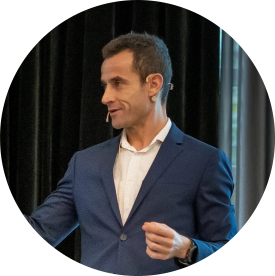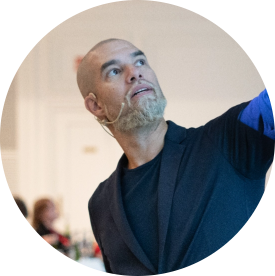Coipmethod Advanced: 2023 Madrid Session Recording
The course offers an in-depth exploration of the aligners technique,
now available as a recording from the live event held in Madrid. Experience the same high-quality instruction and insights, utilizing the best technology, right from the comfort of your home or clinic.
15th, 16th and 17th of December 2023
- Extraordinary quality of the recorded live event
- Accessible without the need to travel
- Available in English
- Led by experienced aligner practitioners
(We recommend that you already have enough experience in invisible orthodontics to do this course or, at least, already have done a course with us)
With this course you will…

Enhance your technique with advanced strategies

Discover how Peydro and Malagón tackle the most challenging cases using solely invisible orthodontics, captured live in Madrid

Eliminate the need for travel, accommodation, and changes to your diet by accessing the course from home

Gain insights from your collegue's questions, get answers to common questions

Transform both your personal and professional life

Exceed your professional development expectations with insights from the live event
Find out who is teaching the course
Doctors Iván Malagón and Diego Peydro, endorsed by all scientific societies, pioneers in invisible orthodontic techniques, speakers and trainers all over the world and experts in making the seemingly impossible possible, in a smile.

Diego Peydro

Iván Malagón
This is the content of the course
Key basic concepts and strategies of the CoipMethod working philosophy. Transversal development of the arches and it’s implications.
1.1Biomechanics applied to tooth movement with aligners: transverse, vertical and sagittal planes
1.2The KEY is in the transverse plane. How to achieve predictability in your treatment plan
1.3Anchorage and SEQUENCE of movement
1.4The 3 basic principles of successful orthodontic treatment with aligners
1.5 The importance of the lower incisor: the final position that guarantees success
1.6Other concepts associated with orthodontic treatment with clear aligners
Protocols to correct class II malocclusion. Handling the vertical dimension. Implications for correcting severe open bites and overbites.
2.1Different strategies to correct class II malocclusions of maxillary, mandibular and bimaxillary origin
2.2Sequential distalisation protocols with and without micro-screws
2.3The importance of the second molar in arch development to avoid anchorage loss
2.4CoipMethod protocols for sequential distalisation
2.5Passive attachments in class II malocclusions. Where to place them
2.6Why not use electric ridges? How to master the root torque technique
2.7Intermaxillary elastics. Type, size and strength for each malocclusion. When to use them
2.8Mesialisation of molars and premolars
2.9Protocols for predictable molar intrusion
2.10Manage the position of the upper incisor in open bites to maintain the aesthetics of the smile
2.11Protocols for correcting overbites
2.12Differences in the intrusion of incisors in upper and lower jaw bones
The day when all the protocols fit together. The start of a successful career. Micro-screws and complex case management.
3.1Sequenced distalisation protocol for the correction of Class II malocclusions with micro-screws
3.2Details and instructions in the revision of the 3D planning to avoid anchorage loss in extreme cases
3.3Multidisciplinary cases
3.4Lower sequential distalisation for the correction of Class III malocclusions
3.5How to start applying all the protocols learned
3.6Day 1 after the COIP Master
3.7Action steps for success
If you’re still unsure, check out what some colleagues who have taken the Advanced Coipmethod course have to say: